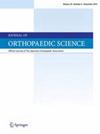A nationwide multicenter study of the cost effectiveness of five leading drugs for pharmacological management of cervicobrachial symptoms
IF 1.5
4区 医学
Q3 ORTHOPEDICS
引用次数: 0
Abstract
Background
Cervicobrachial pain frequently affects the quality of life (QOL) of the general public and has a significant economic impact on the health care systems of various countries. There are a number of treatment options for this disease, including widely-used drug therapy, but the effectiveness of each option is indeterminate, and there have been no published cost-effectiveness analysis studies so far. This prospective observational study aimed to examine the cost-effectiveness of drug treatment for cervicobrachial symptoms.
Methods
A 6-month medication regimen for each of five frequently-prescribed drugs for cervicobrachial symptoms was administered to 322 patients at 24 centers in Japan. Outcome measures, including of the EuroQol Group 5D, Short Form-8, and Visual Analog Scale (VAS), were investigated at baseline and every month thereafter. Incremental cost-effectiveness ratios (ICERs) of the drug cost to quality-adjusted life years (QALYs) were calculated. A stratified analysis of patient characteristics was also performed to identify baseline factors potentially affecting cost-effectiveness.
Results
The ICER of entire drug treatment for cervicobrachial symptoms was 7,491,640 yen. Compared with the reference willingness-to-pay, the ICER was assumed to not be cost-effective. A certain number of QALYs were gained during the first 3 months after the treatment intervention, but almost no QALYs were gained during the following 3 months. Stratified analysis showed that cost-effectiveness was extremely low for patients with high baseline VAS and high QOL.
Conclusions
The available medications for cervicobrachial symptoms did not have excellent cost-effectiveness. Although a certain number of QALYs were gained during the first 3 months after medication, no QALYs were gained in the latter half of the study period, suggesting that it is not advisable to continue the medication needlessly.
Level of evidence
II, prospective cohort study.
一项全国范围内的多中心研究,探讨五种主要药物治疗颈肱骨症状的成本效益。
背景:颈肱骨痛经常影响公众的生活质量(QOL),并对各国的医疗保健系统产生重大的经济影响。该疾病有多种治疗方案,包括广泛使用的药物治疗,但每种方案的有效性都不确定,迄今为止还没有公开发表的成本效益分析研究。这项前瞻性观察研究旨在探讨药物治疗颈椎病症状的成本效益:方法:日本 24 个中心的 322 名患者接受了为期 6 个月的药物治疗,每种药物都有 5 种治疗颈肱骨症状的常用药物。在基线期和之后的每个月对结果进行调查,包括 EuroQol Group 5D、Short Form-8 和视觉模拟量表(VAS)。计算了药物成本与质量调整生命年(QALYs)的增量成本效益比(ICERs)。此外,还对患者特征进行了分层分析,以确定可能影响成本效益的基线因素:结果:颈肱症状全药治疗的 ICER 为 7,491,640 日元。与参考支付意愿相比,ICER 被认为不具有成本效益。治疗干预后的前 3 个月获得了一定数量的 QALY,但随后 3 个月几乎没有获得 QALY。分层分析表明,基线 VAS 高和 QOL 高的患者的成本效益极低:结论:现有的治疗颈肱骨症状的药物并不具有出色的成本效益。尽管在用药后的前 3 个月获得了一定数量的 QALY,但在研究的后半期却没有获得任何 QALY,这表明不必要地继续用药并不可取:II级,前瞻性队列研究。
本文章由计算机程序翻译,如有差异,请以英文原文为准。
求助全文
约1分钟内获得全文
求助全文
来源期刊

Journal of Orthopaedic Science
医学-整形外科
CiteScore
3.00
自引率
0.00%
发文量
290
审稿时长
90 days
期刊介绍:
The Journal of Orthopaedic Science is the official peer-reviewed journal of the Japanese Orthopaedic Association. The journal publishes the latest researches and topical debates in all fields of clinical and experimental orthopaedics, including musculoskeletal medicine, sports medicine, locomotive syndrome, trauma, paediatrics, oncology and biomaterials, as well as basic researches.
 求助内容:
求助内容: 应助结果提醒方式:
应助结果提醒方式:


